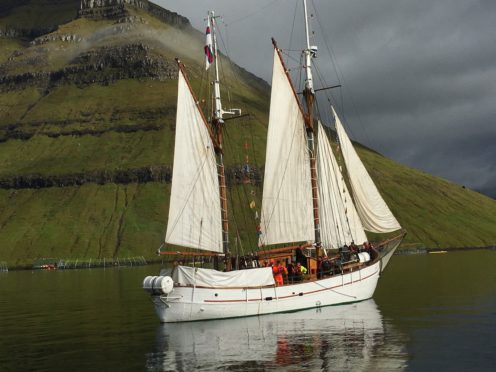A flotilla of historic fishing boats will sail in to Shetland next month as part of celebrations to mark the centenary of the Faroese flag.
The ships – two of which date from 1884 – will visit Lerwick on June 13 and 14, and will be open to the public.
The visit comes courtesy of Faroese Association of Wooden Sailing Ships, or Felagið Føroysk Træseglskip.
A spokesman said: “Our bonds with Shetland are long-standing and very close, not least through the many aspects we share in our maritime history and heritage.
“While in Lerwick the ships are open to the public so people can visit the seven ships and speak with members of the crew about the ships and the old relationship between Shetland and Faroe Islands.”
The Faroese flag was designed in the Danish capital of Copenhagen in 1919 by Faroese students and was presented to the public in a park to the north of the city.
The 2019 Faroese Flag Flotilla will first visit Denmark, taking in the cities of Århus and Copenhagen, before stopping off in Lerwick on the way back to Faroe.
Five of the seven vessels due to visit Shetland have been deemed worthy of preservation by the National Museum of the Faroe Islands.
The Johanna and the Westward Ho were built in England in 1884.
They will be joined by the Dragin, built in Copenhagen in 1945, and the Thorshavn, which is five years older.
Norðlýsið was built at the Torshavn shipyard in 1945.
Two motorised boats will feature in the fleet – the Heimdal and Norðan, designed and built by celebrated boat builder Lias í Rættará in Torshavn in 1919 and 1945 respectively.
The daily maintenance and running of all the vessels is taken care of by a dedicated circle of “ship friends” who are interested in the preservation of the cultural heritage.
Johanna and Westward Ho are both ships known in Faroese as slupp – ‘smack’ in English – that were imported from England and Scotland from the late 1870s until the 1930s.
These vessels helped to transform the Faroe Islands from a farming to a fisheries-based society and also to a modern cash-based economy.
There were over 130 ‘smacks’ active in their heyday in the Faroe Islands, but today only Johanna and Westward Ho survive.
